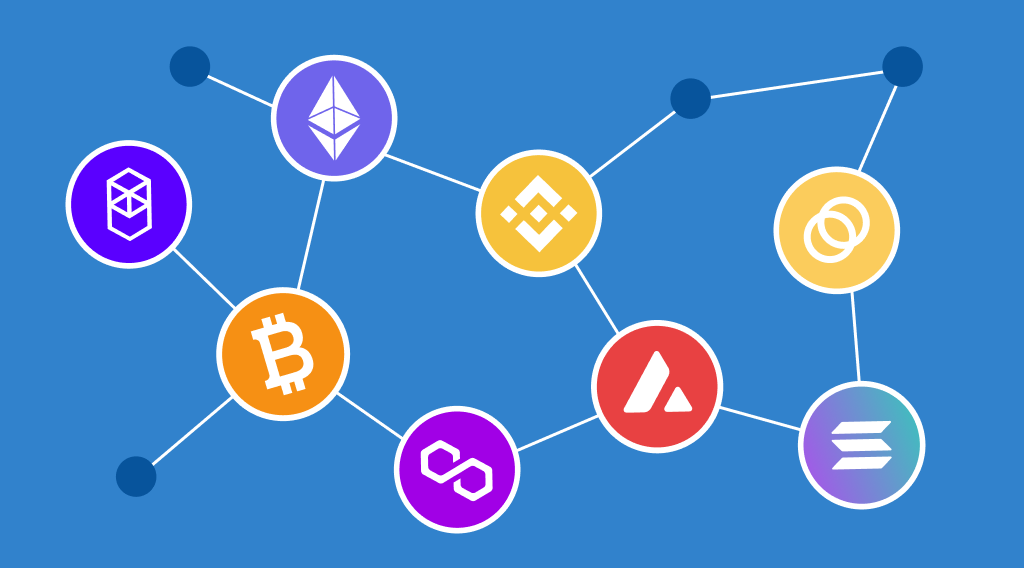Our world thrives on seamless connectivity, where applications effortlessly share data, and information flows unhindered across digital borders. However, in the dynamic realm of blockchain technology, a peculiar challenge persists. Despite their promise of revolution, blockchains often exist as isolated silos, limiting their potential and fragmenting the entire ecosystem.
Envision a future where these walls crumble: a world where assets effortlessly move between Ethereum and Solana, where smart contracts seamlessly traverse various chains, and data flows freely between Cosmos and Polkadot. This is the vision of interoperable blockchains.
The Silo Problem:
Currently, diverse blockchains dot the landscape, each with unique strengths catering to specific needs. While this diversity is exciting, it creates islands of information and functionality. For example, a token locked on Ethereum cannot directly fuel a DeFi protocol on Avalanche, and data trapped in Hyperledger Fabric remains inaccessible to the bustling world of dApps on Polygon. This compartmentalization stifles innovation, impedes user experience, and limits the true potential of blockchain technology.
Enter the Bridge Builders:
Acknowledging this fragmentation, innovative minds are creating pathways between siloed chains. The concept of cross-chain communication protocols emerges as the key to blockchain harmony. These protocols act as translators, enabling chains to understand and communicate with each other, facilitating the secure transfer of data and assets.
Imagine a cross-chain bridge as a digital gateway connecting two previously isolated islands. Users deposit their Ethereum assets on the bridge, which locks them and mints equivalent representations on the target chain. This “twin” token can then be freely used within the second chain’s ecosystem, returning seamlessly to its Ethereum home when desired. It’s akin to magic, fueled by cryptographic wizardry.
The Benefits of Interoperability:
The potential of interoperable blockchains is transformative:
- Frictionless Finance: DeFi protocols could borrow liquidity from multiple chains, optimizing returns for users and unlocking deeper capital pools.
- Borderless Data: Supply chain information could flow seamlessly across blockchains, ensuring transparency and trust in global trade.
- Interoperable Gaming: In-game assets could migrate freely between virtual worlds, creating a truly immersive and interconnected metaverse.
- Scalability Unleashed: Applications could leverage the strengths of individual chains, using Ethereum’s security for critical transactions while tapping into Solana’s speed for fast-paced interactions.
Challenges and the Road Ahead:
Despite the dazzling vision, challenges remain. Ensuring secure cross-chain communication requires robust protocols and constant vigilance against vulnerabilities. Standardization and collaboration among blockchain developers are crucial to build a universal bridge network.
However, the momentum towards interoperability is undeniable. Projects like Polkadot’s Relay Chain and Cosmos’ IBC protocol actively build cross-chain infrastructure. Companies like Chainlink and Wanchain are developing innovative solutions for secure and decentralized communication between blockchains.
A Brighter Future:
As the walls slowly crumble, a more interconnected and efficient blockchain ecosystem emerges. The future promises seamless interaction, boundless possibilities, and a truly decentralized utopia where applications and data flow freely, unchained by the limitations of isolated networks. It’s a future we can all embrace, a future where blockchains break the shackles of their silos and finally realize their full potential.
This is just the beginning of the conversation. Are you excited about the future of interoperable blockchains? What challenges do you see, and what opportunities do you think it presents? Share your thoughts in the comments below!




